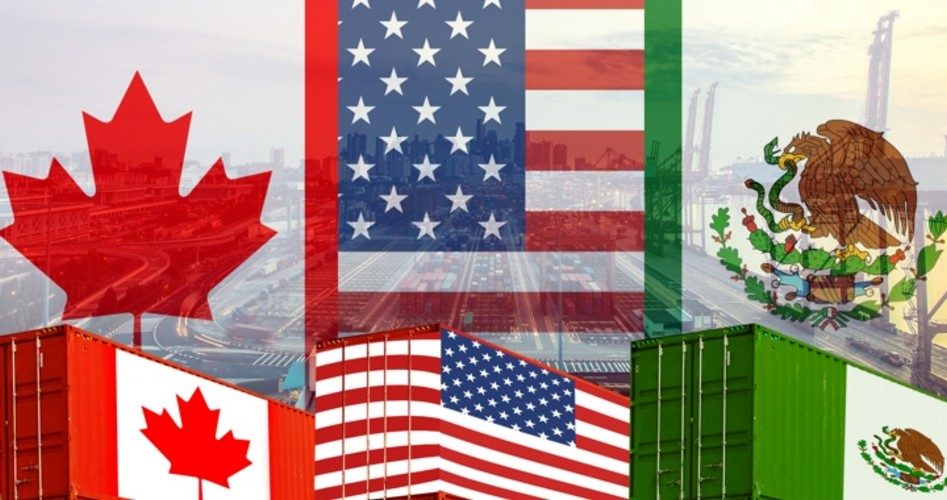
In order to achieve wide bipartisan approval for the United States-Mexico-Canada Agreement (USMCA) as well as support from Mexico and Canada, the White House will lift its steel and aluminum tariffs on Mexico and Canada, U.S. Trade Representative Robert Lighthizer told the U.S. Senate Finance Committee on March 12, 2019. “What I’m trying to do is a have a practical solution to a real problem … get rid of tariffs on these two, let them maintain their historic access to the U.S. market which I think will allow us to still maintain the benefit of the steel and aluminum program,” Lighthizer said. Lighthizer is a 20-year veteran of the world government-building Council on Foreign Relations and has served as the Trump administration’s chief NAFTA/USMCA negotiator.
Attempting to recapture the legislative success of the bipartisan criminal justice reform bill signed into law by President Trump, officials from both the White House and U.S. Trade Representative Office have been meeting with congressional Democratic leaders to garner bipartisan support for the USMCA.
Likewise, “Pass USMCA Coalition,” a self-described “group of trade associations, businesses, and advocacy groups working together to ensure swift passage of the United States-Mexico-Canada Agreement (USMCA)” and not to be confused with the U.S. Chamber of Commerce’s “USMCA Coalition,” hired former Representative Joe Crowley (D-N.Y.) as an honorary co-chairman in order to lobby support from his former Democratic colleagues in Congress.
“I’m excited to join the Pass USMCA Coalition,” Crowley said at a Canadian American Business Council meeting on USMCA ratification. “USMCA is a landmark trade victory for America’s workers. My former colleagues should take action to ratify the agreement quickly.” Rick Dearborn, Pass USMCA’s executive director, told PR Newswire, “Joe’s understanding of Congress will help us get USMCA across the finish line.”
Crowley served in the House of Representatives for 10 years (1999-2019) and was chair of the House Democratic Caucus from 2017 to 2019. In 2018, he was ousted in the Democratic primary by Democratic Socialist of America (DSA) and Brand New Congress (BNC) candidate Alexandria Ocasio-Cortez.
On March 7, 2019, Politico reported that “[Trump] Administration officials have been organizing dozens of meetings with rank-and-file lawmakers to try to build bipartisan support for the deal.” The article revealed how “senior officials from the White House and the U.S. Trade Representative’s office have met with Ways and Means Committee members, the House GOP whip team, the Problem Solvers caucus, the Tuesday Group, the Hispanic Caucus and the Blue Dogs.” The White House’s goal is “get a vote on the pact by late summer.”
On March 11, 2019, the National Association of Farm Broadcasting’s NAFB News Service reported that “Trump recently told reporters he’ll be sending the U.S.-Mexico-Canada Agreement to Capitol Hill for ratification ‘very shortly.’” This would, as the NAFB News Service reported, “jump-start a 90-day clock during which lawmakers would have to approve or reject the president’s signature trade deal.”
However, support from both Republican and Democratic congressional lawmakers is contingent upon the elimination of Trump’s 25-percent tariff on steel imports and 10-percent tariff on aluminum imports. “Before Congress considers legislation to implement USMCA, the Administration should lift tariffs on steel and aluminum imports from our top two trading partners and secure the elimination of retaliatory tariffs that stand to wipe out gains our farmers have made over the past two and a half decades,” Senator Chuck Grassley (R-Iowa), the chairman of the Senate Finance Committee, said in a January 30, 2019 press release. The following month, Grassley told reporters, “It’s very, very important that the White House get on board with doing away with these tariffs so we can get this thing not only before the Congress of the United States but before the Mexican Senate and before the Parliament, the House of Commons in Canada.”
Despite what lawmakers say, the tariffs have contributed to the expansion of domestic steel and aluminum production and creating new manufacturing jobs in those industries.
Nevertheless, congressional Republicans and Democrats remain adamant on eliminating those tariffs. On March 12, Lighthizer also met with members of the pro-trade New Democrat Coalition in the House of Representatives. “Some of us impressed the need to resolve [the tariffs] before we have a chance to move forward” on consideration of the USMCA, Representative Ron Kind (D-Wis.) said.
Likewise, the Mexican government has echoed the calls from U.S. lawmakers to end the tariffs. A Mexican official, speaking to Voice of America on condition of anonymity, said, “Our position is that we should not have tariffs or quotas. We have to help the U.S. construct the narrative of why exclusion [from tariffs] for Mexico is valid.” While attending a conference in Ottawa, Mexican Senator Antares Guadalupe Vázquez Alatorre (AGVA) told Aluminum Insider, “We are going to approve it,” speaking of the USMCA, “but right now our government is trying to deal with this [the tariffs].” Despite claiming to approve USMCA pending the U.S. eliminates its steel and aluminum tariffs on Mexico, she also said that her government is in no rush. “We’re not in a rush. Trade right now, it’s working,” AGVA said.
Senator AGVA is the founder of the National Regeneration Movement (MORENA, by its Spanish acronym), which is the same political party that President Andrés Manuel López Obrador (AMLO) belongs to and which also holds a majority in both chambers of Mexico’s Congress.
As for trade working for Mexico, Mexican Deputy Trade Minister Luz Maria de la Mora told Aluminum Insider, “We hope to have this new agreement in place. But in the absence of the new agreement, we know that NAFTA is good enough.” Not only does NAFTA work to Mexico’s economic advantage, it provides the framework for North American integration and the establishment of a post-national sovereignty “new world order.”
In 1993, U.S. Secretary of State Henry Kissinger wrote about NAFTA: “What Congress will soon have before it is not a conventional trade agreement but the hopeful architecture of a new international system.” Further elaborating, “A regional Western Hemisphere Organization dedicated to democracy and free trade would be a first step toward the new world order that is so frequently cited but so rarely implemented.” (Emphasis added.)
Building on that “new world order,” then-Mexican President Enrique Peña Nieto said during his remarks at the USMCA signing ceremony on November 30, 2018, “The negotiation of the Mexico-United States-Canada Treaty made it possible to reaffirm the importance of the economic integration of North America.” (Emphasis added.) The “Mexico-United States-Canada Treaty” is the English translation for the USMCA’s name in Spanish, used by the Mexican government. The Spanish acronym for it is T-MEC, which stands for Tratado México-Estados Unidos-Canadá or Treaty between Mexico-United States-Canada.
“The renegotiation of the new trade agreement sought to safeguard the vision of an integrated North America, the conviction that together we are stronger and more competitive,” President Peña Nieto further remarked. “The Mexican-United States-and-Canada Treaty gives a renewed face toward our integration.”
Peña Nieto’s remarks were not simply the product of his own wishful thinking and globalist ambitions, but a reiteration of what’s in the text of the agreement. In the USMCA’s Chapter 26 on competitiveness, all three countries agree to establish a Committee on Competitiveness, or a North American Competitiveness Committee, with “a view to promoting further economic integration among the Parties and enhancing the competitiveness of North American exports.” Article 26.5 of the USMCA further states:
The Competitiveness Committee shall […] discuss effective approaches and develop information-sharing activities to support a competitive environment in North America that facilitates trade and investment between the Parties, and promotes economic integration and development within the free trade area. [Emphasis added.]
In other words, the USMCA’s objective is not to make the United States (or Mexico and Canada) a more competitive country. Instead, the goal is the “integration” (or merger) of all three countries into one single, unified trading bloc that will then in turn be competitive among the world’s other trading blocs, such as the European Union, African Economic Community, Mercosur, Eurasian Economic Union, ASEAN-China Free Trade Area, and the Trans-Pacific Partnership. This is the “new international system” and “new world order” that Kissinger and other globalist luminaries often cite. Whereas Trump promised to “Make America Great Again” (MAGA), in actuality, if implemented, the USMCA will Make North America Great Again (MNAGA).
If MNAGA is the goal, then Trump’s steel and aluminum tariffs on both Mexico and Canada would have to be lifted. This underscores the need for the United States to permanently withdraw from NAFTA and stop the USMCA.
Image: AkaratPhasura via iStock / Getty Images Plus





